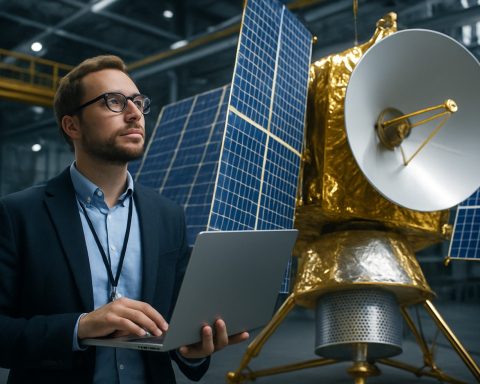- Asteroids like Bennu present significant risks to Earth, despite their low probability of collision.
- An impact from a large asteroid could cause catastrophic immediate effects, including shockwaves and tsunamis.
- Long-term consequences may include a dramatic drop in global temperatures and a resulting impact winter, lasting over four years.
- Climate changes could lead to reduced rainfall and threaten food supplies and ecosystems.
- NASA’s research and sample retrieval from Bennu aim to deepen our understanding of these celestial threats.
- Vigilance and preparedness are key to mitigating the potential dangers posed by near-Earth objects.
Imagine a colossal asteroid, like the size of the One World Trade Center, hurtling toward Earth. Scientists have painted a vivid picture of what would unfold if an asteroid akin to the near-Earth rock Bennu collided with our planet. This 0.31-mile-wide behemoth, weighing a staggering 74 million tons, might seem smaller than the one that wiped out the dinosaurs, but its impact would be catastrophic!
Upon impact, the immediate aftermath would unleash devastating shockwaves and fiery tsunamis, obliterating everything near the collision site. But the real horror lies in the long-term effects. Researchers predict that the debris spewed into the atmosphere could plunge global temperatures by up to 7.2°F, resulting in a dire “impact winter.” This climate catastrophe could reduce rainfall by 15%, severely threatening our food supply and ecosystem for more than four years!
As dust clouds obscure sunlight, plant growth would slow, disrupting photosynthesis and plunging global crop yields into peril. While some ocean algae may thrive on iron-rich dust, the massive disruption could throw marine ecosystems into chaos.
Despite these dire predictions, the likelihood of a Bennu impact remains low, with a mere 1 in 2,700 chance of collision by 2182. Yet, NASA is committed to unraveling the mysteries of Bennu, having retrieved samples that contain the essential building blocks of life.
Takeaway: The future could hold both wonders and threats from asteroids like Bennu, serving as a reminder of our planet’s vulnerability. Stay informed to protect our world!
The Asteroid Threat: What You Need to Know!
Asteroids like Bennu have long held the curiosity and imagination of scientists and the public alike. While the immediate threat may seem distant, understanding the implications of a potential impact is crucial. Here we delve into significant insights, including potential innovations in asteroid tracking, sustainability considerations, and the importance of public awareness regarding near-Earth objects.
Innovations in Asteroid Detection and Mitigation
Recent advancements in technology have enhanced our ability to detect and track near-Earth objects (NEOs) like Bennu. NASA’s Planetary Defense Coordination Office is actively developing methods to divert potential asteroid threats. One notable innovation is the DART (Double Asteroid Redirection Test) mission, which successfully demonstrated the ability to alter an asteroid’s trajectory through kinetic impact.
Sustainability and the Importance of Monitoring Asteroids
Understanding the risks posed by asteroids is crucial for sustainable development. The post-impact scenarios described, such as the potential for an “impact winter,” highlight the importance of monitoring these celestial bodies. By investing in asteroid monitoring programs, we can better prepare for and mitigate the consequences of potential impacts on agriculture and ecosystems.
Asteroids and the Future of Space Exploration
Asteroids are not just threats; they can also be valuable resources. The materials found in asteroids could be vital for future space exploration missions. The potential for mining asteroids for water and rare minerals presents exciting opportunities for the future of humanity in space.
Key Related Questions
1. What are the chances of an asteroid collision with Earth?
The current estimate for an asteroid collision with a sizable object like Bennu is approximately 1 in 2,700 by the year 2182. While seemingly low, scientists continue to monitor and study asteroids to mitigate risks.
2. How do scientists track and analyze asteroids like Bennu?
Scientists utilize telescopes and radar systems to track the trajectories of asteroids. By calculating their orbits, researchers can determine if they pose a potential threat to Earth and develop mitigation strategies.
3. What are potential consequences of an asteroid impact?
An asteroid impact could result in immediate and long-term environmental consequences, such as massive shockwaves, tsunamis, and climate disruptions. These effects could lead to agricultural collapse and wildlife extinction, significantly threatening global biodiversity.
Stay informed about the potential threats and opportunities presented by asteroids. For more information, visit NASA for resources on asteroid detection and planetary defense.











